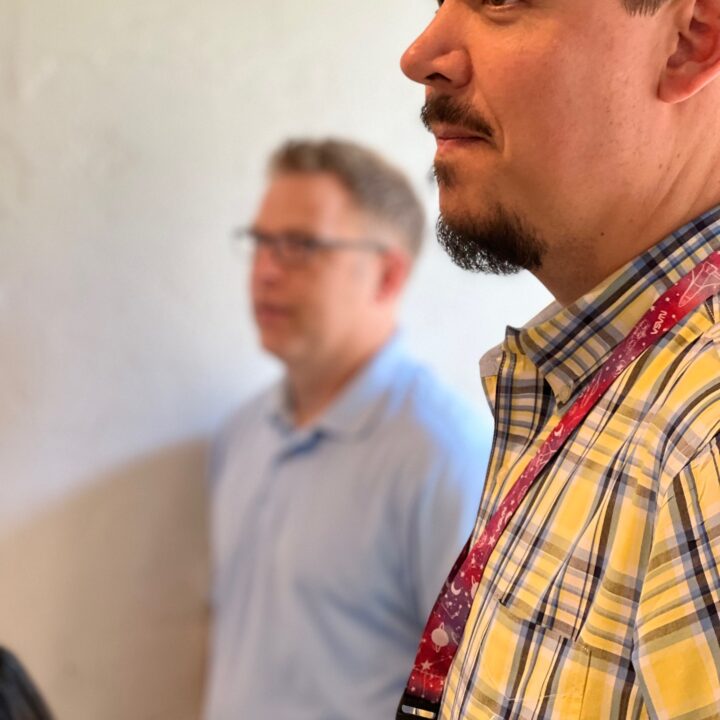Software can be an intimidating investment. It can seem like a costly, complex, and large commitment, but it’s a critical part of an organization’s operational infrastructure. Nonprofits and other organizations that focus on digital maturity are more likely to advance their goals and have stronger relationships with all of their stakeholder groups.
Finding the right option may be easier than you anticipate, and the journey will begin with a fundamental question: should you build or buy a technology solution to meet your goals?
Build vs. Buy What, Exactly?
When considering technology investments, it’s natural to start by deciding if you want to build a custom solution or buy something off-the-shelf.
- Custom Software: Well-built custom software is tailor-made to your organization. Some solutions are built from the ground up and others are built using existing tools and frameworks.
- Off-the-Shelf Software: Sometimes referred to as “out-of-the-box” software, these solutions are designed to solve a domain-specific set of problems and are available for immediate use. They come with preset features and typically offer a limited range of configuration options.
It’s important to understand that there’s some gray area between these two. There are hybrid approaches to software development, such as Salesforce’s highly customizable application platform-as-a-service, which can be an excellent option for many organizations. To keep things simple for now, let’s explore how to choose from these two main options.
Build vs. Buy: Four Factors to Consider
Workflow
The best place to start when evaluating your software needs is establishing concrete answers to the following questions:
- What is unique about the way my team operates?
- Is it critical that our uniqueness is built into our technology solution?
If you’re attached to a distinct way of doing things, as many teams are, a custom system would enable you to tailor the features to precisely align with how you function.
An off-the-shelf product will typically require that you conform your processes to the workflow built into the product. If more than 80% of the product workflow fits your process, you may have found a good fit.
Investment
The amount of money and energy available for investment can help narrow your options.
Building a custom solution often requires a higher investment of both time and money compared to an off-the-shelf solution. A completely custom system can be an excellent long-term investment that grows and evolves with your organization. This saves you the pain of re-implementing another off-the-shelf solution two, five, or ten years later when you outgrow your current solution.
Buying something off-the-shelf will likely save you money and time upfront. If it’s not a fit long-term, however, you may end up losing money as you outgrow it and need something new. Off-the-shelf solutions will typically still require some time to complete the initial configuration. Be sure to understand whether you’ll be making a one-time payment or if the solution requires a subscription.
In both scenarios, you are likely to have recurring costs to address support, ongoing enhancement needs, and licensing. Be sure to factor those considerations into your decision-making process.
Control
Regardless of whether you build or buy, the reality is that at least 70% of data system projects fail. The friction created by poor design can lead to inefficient workflows, staff unhappiness, and a mounting lack of faith in the data that’s collected. That’s one reason why we created a collaborative design process that meets your organization’s evolving needs.
An off-the-shelf system is going to offer:
- Predefined templates and workflow designs that can be configured to meet the needs of your organization
- A typically shorter timeline to begin using the solution compared with building something new
- Less upfront cost, less maintenance cost long term, and less flexibility regarding workflow
This is a great option for organizations in the early stages of organizational development where there’s uncertainty about how the work will change over time and there’s a need to limit the overall investment. Drawbacks of an “out-of-the-box” solution are that you will have limited influence over the introduction of new features and vendors may sunset features that your team has grown accustomed to using. Additionally, teams whose workflows evolve may run into frustrations with limited configuration options.
Building a solution offers:
- Significant control over things like the user experience, data model, and workflow design
- A product that is tailored to your needs, optimizes the way you work, and can evolve with your organization
Custom software solutions can evolve to support the growing and changing needs of your organization. High-quality design doesn’t happen in a vacuum, however; a strong technology partner will ask your team to invest time and perspective and will require ongoing feedback to remain aligned with changing workflows.
Maintenance
Software will always require upkeep and maintenance, whether it’s a custom or off-the-shelf solution.
For many off-the-shelf solutions, much of the system maintenance happens behind the scenes. If many clients are using the solution, you may benefit from other organizations that find bugs or request system changes. With a custom solution, you’ll have more control over maintenance and product development, but you won’t have the benefit of streamlined support and shared cost of maintenance that comes from being a part of a larger user community.
In either case, a quality solution should include a mechanism for providing support. Be sure to ask about how your solution is supported and keep an eye out for where ongoing costs may be incurred. Support is an inevitable requirement of software implementations and you want to ensure your team is set up for long-term success.
The Bottom Line:
The question of build vs. buy boils down to the kind of investment you can make and the problem you’re trying to solve.
If you need to get something working as quickly as possible, don’t have the funds for a significant upfront investment, and are trying to accomplish something narrow in scope, buying something that you can easily deploy (and revisit later) may be the better option.
If you have the resources to invest in a strategic differentiator for your organization through improved alignment with your unique way of operating, building a custom solution may be the best way to maximize your investment.
Finding a Technology Partner
The good news is that you don’t need to make these decisions before you find a technology partner. Many partners can help you to understand your options, and a good partner will help you make the best choice for you and your organization. If you’re evaluating this decision or know someone who is, get in touch and we’ll help find you a path forward.






